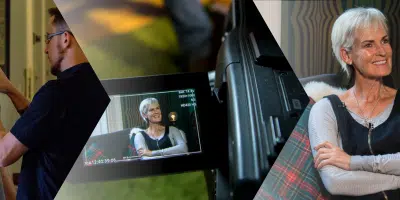Live video content is steadily growing in popularity. Whether it be for marketing purposes, as a supplement to traditional broadcasting, to increase access to live events or just for fun amongst individuals, live video is adding another component to the way information is communicated.
But live streaming is not as easy as you might first imagine. In the last 18 months or so, we’ve handled around 300 separate live productions, so we can definitely confirm there are a lot of factors to consider before ‘pressing play’.
Even the simplest content has an aspect of risk when it comes to live video. Any errors in the stream are difficult to hide given the live nature of the content, and most viewers won’t wait around if you have to cut the stream for even a few seconds.
Here are five of the most overlooked factors:
1. Going Off-Script
With streams that are more complex, the risks are tenfold. They say you should never work with children or animals, right? Well we’ve actually done several live streams for wildlife broadcasts and they work really well, provided there are planned procedures in place for any critters who decide to divert from the script!
One of our most engaging streams was from a fox den for a well-known television channel. We were streaming live from the den for 24 hours of the day, 7 days a week. So it was important to sit down and consider what we would do if, for example, children came home from school and tuned in to see fluffy fox cubs, but were met with a violent or upsetting scene such as a badger attack. We had to decide, in advance, whether we would deploy a backup slide, or to take the whole thing off-air.
These are the kinds of questions some brands forget to ask themselves, but when it comes to live streaming, every potential risk must be considered.
2. Technology
As the medium of live streaming becomes more popular, we’re seeing more and more innovative and adventurous live content. The challenge is making sure the technology can keep up, and being prepared if something goes wrong.
We did another TV project where we spent eight days live streaming a decomposing hippo in the African Savannah. In the midday sun, it was around 65° and this posed a real problem with our camera cables and equipment. In some pieces of kit we had solder actually melting. One solution was to bury the cables to prevent overheating but we also had to predict when the equipment would reach its limit, and shut the stream down for an hour or so during these times, with a slate to explain to the audience what was happening. Again, this comes back to being prepared for risks and having strategies in place to keep the viewers happy when something goes wrong, but it also comes down to knowing the limits of your tech equipment.
3. Copyright
Whilst most people can appreciate the importance of getting the right permissions to use copyrighted material, many are not aware of both how long this process can take, and how sensitive social networks are to any form of copyright infringement.
A large proportion of the live videos we handle are streamed directly into social media networks such as Facebook and YouTube. Both of these platforms have sophisticated monitoring systems to detect copyrighted material, and if something isn’t cleared properly, you can bet they will know about it. YouTube offers a ‘three strikes and you’re out’ policy, but Facebook is stricter. The site will automatically kill a stream in under 10 seconds if it detects any copyrighted material which we do not have the rights to use.
The problem is, these systems are so sensitive that even a copyrighted piece of music played accidentally or by someone else in the background could take a stream off air. On one occasion not long ago, a passing car playing a radio track resulted in a strike on YouTube when our microphone picked it up. Facebook takes around five to six days to clear a music track for use within a live stream, so it’s important to take copyright into account when planning for an event.
4. Bandwidth
Surprisingly, bandwidth requires its own category separate from technology just because of how often it’s taken for granted. Most often, the issue with bandwidth is purely making sure it’s strong enough to handle a high quality stream. Many of our clients tend to forget about the importance of a strong internet connection when it comes to getting live content offsite.
They also assume that a strong internet connection for things like web browsing means that it will be the same for live streaming, but this isn’t the case. They may have a speed of 100mb, but when a whole building full of people are draining the bandwidth, it often gets squeezed to considerably lower. We get around this when handling a stream by physically sending an engineer to test a venue’s broadband signal, regardless of what they tell us beforehand.
Then there’s the added worry of the rise of live 360° video in 4K. On one hand, shooting 360° footage in 4K is clearly beneficial for the medium, increasing the quality and therefore viewer experience, but it requires more bandwidth. So we have to ensure the average viewer is able to enjoy a stream even without a 15mb connection. Part of this involves degrading streams for those who lack the bandwidth to stream 4K.
5. Choosing the right streaming specialist
We just had to mention this because, of course, Groovy Gecko is the best in the game! All jokes aside, if you want a quality live stream that’s error free and gives you value for money, you have to pick the right specialist. We work directly with Facebook as a live production partner and we’re also featured on its list of certified providers of quality live 360° degree services. Basically, we know how to live stream well.
Some of the factors mentioned above are not deal breakers, but live video is such a unique opportunity to significantly grow audiences and increase viewer engagement, so it’s really important to get right. If you’re looking to live stream, get in touch with us today to see how we could help maximise the value of your live video content.



